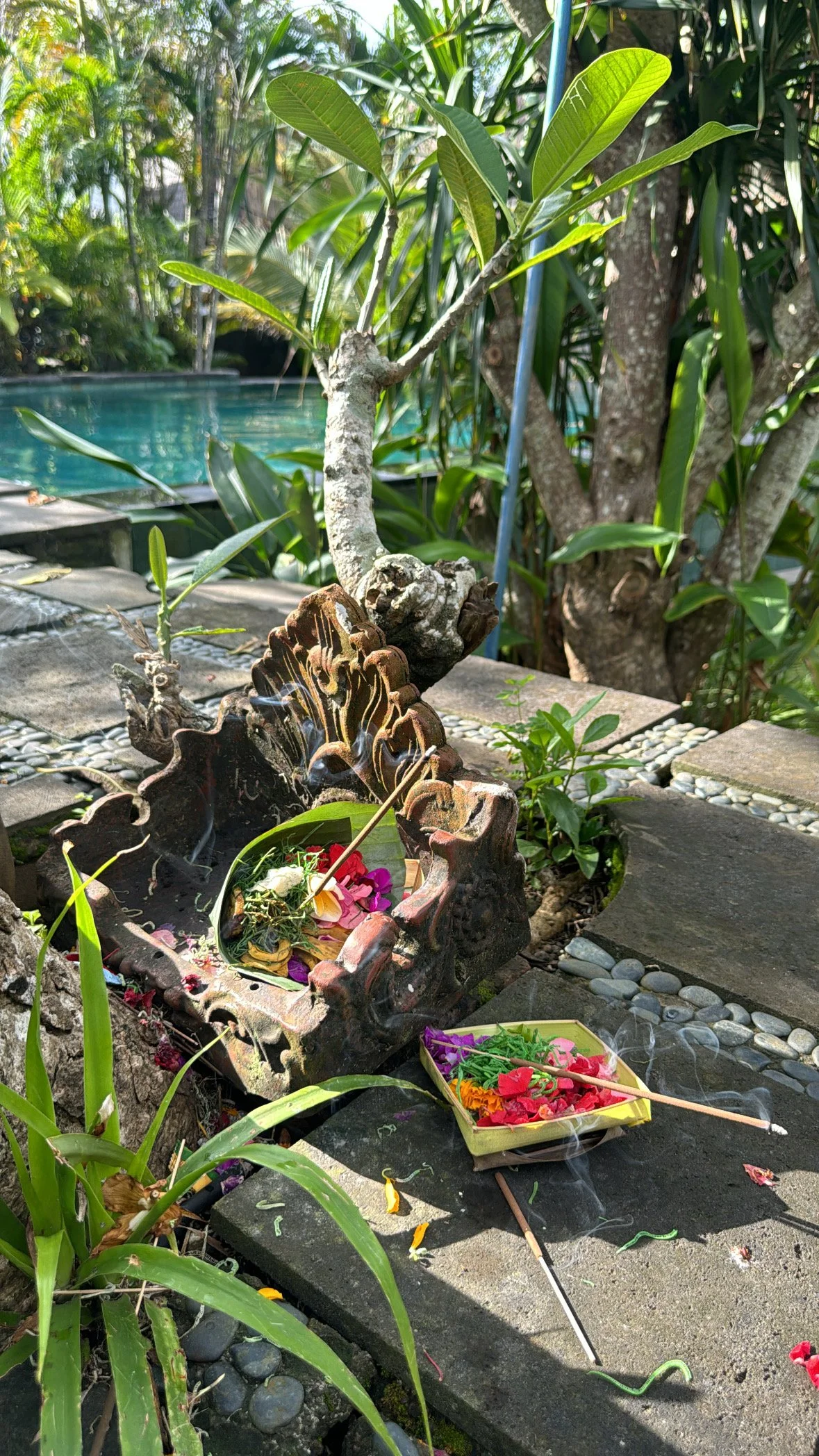The Beautiful Purpose
Lessons from Balinese Offerings — The Beautiful Purpose
Mama Bali, the island of the gods. Her energy is something you feel before you can even describe it—warm, grounding, and so full of life. From the moment we arrived, we’ve been met with the kindest smiles, soft greetings, and a gentle, unspoken hospitality. It didn’t take long to wonder: where does this beautiful energy come from? Is it simply the people? Or does it come from something deeper—their beliefs, their rituals, their way of life?
Almost instantly, I started noticing these little woven baskets everywhere. Delicately arranged with flowers, rice, crackers, candy, sometimes even cigarettes. Always accompanied by a stick of incense gently burning—its smoke curling upward into the sky. These offerings were placed on the sidewalks, in front of homes, in entryways, on temples, and outside every business. So I asked my scooter driver what they meant.
“Canang Sari,” he said. “It means beautiful purpose.”
How perfect is that?
In Bali, Canang Sari are daily offerings made as a form of gratitude and devotion. They are part of the Balinese Hindu practice, a way to honor the divine and to seek blessings, peace, and protection. Rooted in the belief system of Tri Hita Karana—which translates to the three causes of well-being—the philosophy speaks to living in harmony with three core aspects: the gods, nature, and other human beings.
Each offering is a small act of love. A prayer. A gesture.
What I’ve come to love is how seamlessly spiritual practice is woven into daily life here. It’s not performative or loud—it’s quiet and constant. It shows up in the way people smile at strangers, in the calmness of traffic, in the patience shared even when there’s a language barrier. It’s devotion, but not just to the divine—it’s devotion to life.
And I can’t help but wonder, is this ritual of offering part of what makes Bali feel so full of soul?
The Bhagavad Gita says:
“Whosoever offers to me with devotion a leaf, a flower, a fruit, or water, that offering of love, of the pure heart I accept.” (IX:26)
It’s not about extravagance—it’s about intention.
The materials in a Canang Sari are simple, yet deeply symbolic:
Flowers represent joy and beauty
Incense symbolizes purification and the presence of the divine
Rice stands for sustenance and prosperity
The basket itself, often handmade from palm leaves, holds it all together—a container of love
Even the direction the offering faces and the colors of the flowers are chosen with meaning. Every detail is deliberate.
One morning, I looked out from our bungalow and saw an older woman carefully gathering fresh blossoms. She climbed a tree—barefoot, steady, glowing with purpose—to pick the most vibrant flowers for her offering. It wasn’t rushed or careless. She did not pick the flowers that had already fallen to the ground.
It was a sacred part of her day. A ritual that had been passed down, likely for generations. And at that moment, I felt so moved. Her offering wasn’t just for the gods—it was for the energy of the space, the people around her, herself.
After our surf lesson one morning, I remember the scent of incense trailing through the air as we carried our boards back up to the van. I paused. The air felt clear. I felt present. It reminded me how even in a place so far from home, I could still create space for gratitude.
It made me think—what would my version of Canang Sari look like?
It doesn’t have to be a basket or a flower or incense. It could be a moment of stillness before my day starts. Lighting a candle. Saying a quiet thank you. Offering presence to the people I care about. Honoring what I have, right now.
These small moments hold power. They bring us back to ourselves.
So much of what we do in life is about chasing: more time, more money, more validation, more stuff. But the beauty of Canang Sari is that it’s not about getting anything—it’s about giving.
A few minutes a day. An intentional pause. A chance to reconnect.
So now I ask:
What’s your offering today?
What’s something you can give, however small, with love?



